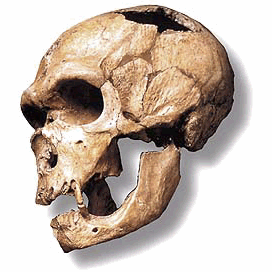Bipedalism: The Science Behind Your Legs
- Laurie L.

- Jul 18, 2019
- 4 min read
Updated: Jun 24, 2022

We like to think humans are special because of our differences from other species, but what does it mean to be human? A big brain? Dolphins have big brains too! Hairless? So are naked mole rats! Humans aren't the only organism that's bipedal either, so how did we develop that and what makes it "unique"?
Origins of Bipedalism
Let's start with the basics. What could have caused bipedalism to happen over time or in other words, how was the trait selected for? For information about the processes of evolution, please click this LINK.
There's a lot of different ideas, but one that's quick to rule out is speed. Humans can't run faster than quadrupedal animals, but we can walk for miles and miles without wasting too much energy and outlast them in distance. Human ancestors have another quality that bipedalism allowed us to develop. Pinch your thumb and first finger together for a second.
That's precision grip! Many anthropologists (although it's still debated and being researched) think that our precision finger gripping encouraged bipedal development as human ancestors explored new niches to fill. By being able to make tools, cook food, and build things, it's a possible explanation for why bodies eventually became what they are now.
The Foot

From the foot to the leg to the spine to the skull; every part of our skeleton is developed to walk on two legs. Let's start with the foot. Human feet allow us to balance ourselves as we walk, unlike apes. A part of identifying human ancestors includes looking at foot shape to see where the big toe is on a fossil. The closer it is to our feet, the more likely it is to be a transitional fossil from other primates to humans.
Human ancestors were both arboreal (living in trees) and somewhat ground walking, so as hominins developed bipedalism, you can see these changes in bone structure.
The Femur
There is a difference in the shape of femurs in humans compared to other primates and animals. Below you can see the chimpanzee femur compared to a hominin (human ancestor) compared to a human. The base of the femur tilts inward for humans to support our center of gravity.

You can also see a difference in hip bone shape which is because of human babies. Humans have the largest brain to body size ratio of all animals so the hips developed more rounded openings for childbirth. That's why many scientists thought that big brains developed before bipedalism until the fossils showed us otherwise.
Center of Gravity

The picture on the right shows how the center of gravity works as we walk. Bipedalism comes down to our ability to balance on one foot as we walk. The moment in between our steps is what our bodies are adapted to. We hold our center just below our diaphragm, so we can stay balanced. When other primates try to do it, they wobble!
Not only do other primates not have the same feet or femurs as we do, but because of their spines and necks, they can't continue to walk without wasting energy and being uncomfortable.
The Spine

Human spines are curved at the coccyx to support our body weight and align with our skulls at the top to allow us to look straight ahead without hurting our necks.
Our human ancestors show a slow development with all the bipedal traits and it's amazing that we can see that in our fossils. Now with DNA discoveries and more excavations, we're uncovering even more human ancestors that we didn't know existed!
The Foramen Magnum

The hole at the base of our skulls where the spine goes through is the foramen magnum. In the image depicting three different skulls, you have the chimp on top, the Australopithecus in the middle, and a human skull on the bottom.
Being able to stand upright will be uncomfortable to say the least for the chimp as nerves can be pitched and it takes a lot of effort to force the head down when standing up.
Australopithecus is more comfortable being able to be both arboreal and somewhat bipedal, and the human is entirely developed to walk on two legs, no longer quadrupedal and saving energy.
Anthropologists work diligently to excavate and study the bone they collect to determine what happened in our history, where, when, and how. The field continues to grow as we dig into our past as a human race.
Sources:
Lecture Notes: Dr. Kurtis Dean and Dr. James Loch, Evolution, Fall 2018
Lectures Notes: Dr. Hannah Marsh, Human Prehistory, Fall 2014; Human Variation, Spring 2016; Human Evolution, Fall 2016
"The Evolution of Human Bipedality" Journal of Human Evolution, 26, 183-202, (1994)
"The Origin of Man". Science. 211 (4480)
"Origin of Habitual Terrestrial Bipedalism in the Ancestor of the Hominidae". Journal of Human Evolution. 24 (4): 259–280
"Theories of Bipedalism". Britannica.
"Becoming Human: The Evolution of Walking Upright" Smithsonian Magazine.
https://www.smithsonianmag.com/science-nature/becoming-human-the-evolution-of-walking-upright-13837658/#xhS4k6GkQOoWeleZ.99









Comments